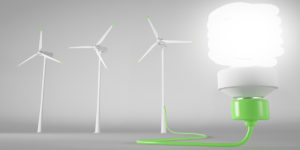Air Conditioners*
ADHSolar has educated thousands of customers about air conditioners. The best air conditioners use 30% to 50% less energy to produce the same amount of cooling as air conditioners made in the mid 1970s. Even if your air conditioner is only 10 years old, you may save 20% to 40% of your cooling energy costs by replacing it with a newer, more efficient model.
Proper sizing and installation are key elements in determining air conditioner efficiency. Too large a unit will not adequately remove humidity. Too small a unit will not be able to attain a comfortable temperature on the hottest days. Improper unit location, lack of insulation, and improper duct installation can greatly diminish efficiency.
Energy Efficiency
When installing a new air conditioner, look for a model with a high efficiency. Central air conditioners are rated according to their Seasonal Energy Efficiency Ratio (SEER). SEER indicates the relative amount of energy needed to provide a specific cooling output. Many older systems have SEER ratings of 6 or less.
If your air conditioner is old, consider buying an energy-efficient model. Ensure to look for the ENERGY STAR® and EnergyGuide labels — qualified central units, they are about 15% more efficient than standard models. New residential central air conditioner standards went into effect on January 1, 2015; see the efficiency standards for central air conditioners for details, and consider purchasing a system with a higher SEER than the minimum for greater savings.
The standards do not require you to change your existing central air conditioning units, and replacement parts and services should still be available for your home’s systems. The “lifespan” of a central air conditioner is about 15 to 20 years. Manufacturers typically continue to support existing equipment by making replacement parts available and honoring maintenance contracts after the new standard goes into effect.
Other features to look for when buying an air conditioner include:
- A thermal expansion valve and a high-temperature rating (EER) greater than 11.6, for high-efficiency operation when the weather is at its hottest
- A variable speed air handler for new ventilation systems
- A unit that operates quietly
- A fan-only switch, so you can use the unit for nighttime ventilation to substantially reduce air-conditioning costs
- A filter check light to remind you to check the filter after a predetermined number of operating hours
- An automatic-delay fan switch to turn off the fan a few minutes after the compressor turns off.
- When your air conditioner is installed correctly, it will perform efficiently for years with only minor routine maintenance. Unfortunately, many air conditioners are not installed correctly. As a result, modern energy-efficient air conditioners will perform as poorly as older inefficient models. When installing a new central air conditioning system, be sure that your contractor:
- Allows adequate indoor space for the installation, maintenance, and repair of the new system, and installs an access door in the furnace or duct to provide a way to clean the evaporator coil
- Uses a duct-sizing methodology such as the Air Conditioning Contractors of America (ACCA) Manual
- Ensures there are enough supply registers to deliver cool air, and enough return air registers to carry warm air back to the air conditioner
- Installs duct work within the conditioned space, not in the attic, wherever possible
- Seals all ducts with duct mastic and heavily insulates attic ducts
- Locates the condensing unit where its noise will not keep you or your neighbors awake at night, if possible
- Locates the condensing unit where no nearby objects will block airflow to it
- Verifies that the newly installed air conditioner has the exact refrigerant charge and airflow rate specified by the manufacturer
- Locates the thermostat away from heat sources, such as windows or supply registers
Credit:
“Central Air Conditioning.” Energy.gov, www.energy.gov/energysaver/central-air-conditioning.
*Currently Outsourced



 Energy Efficiency
Energy Efficiency
